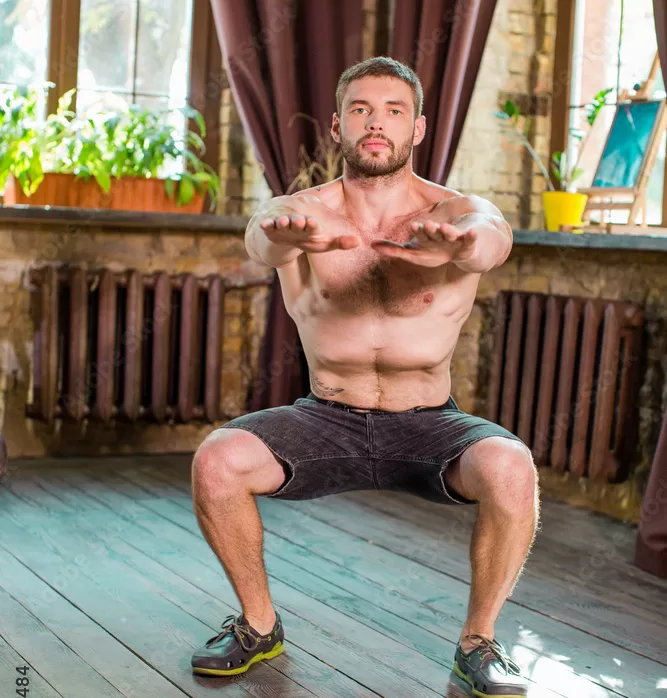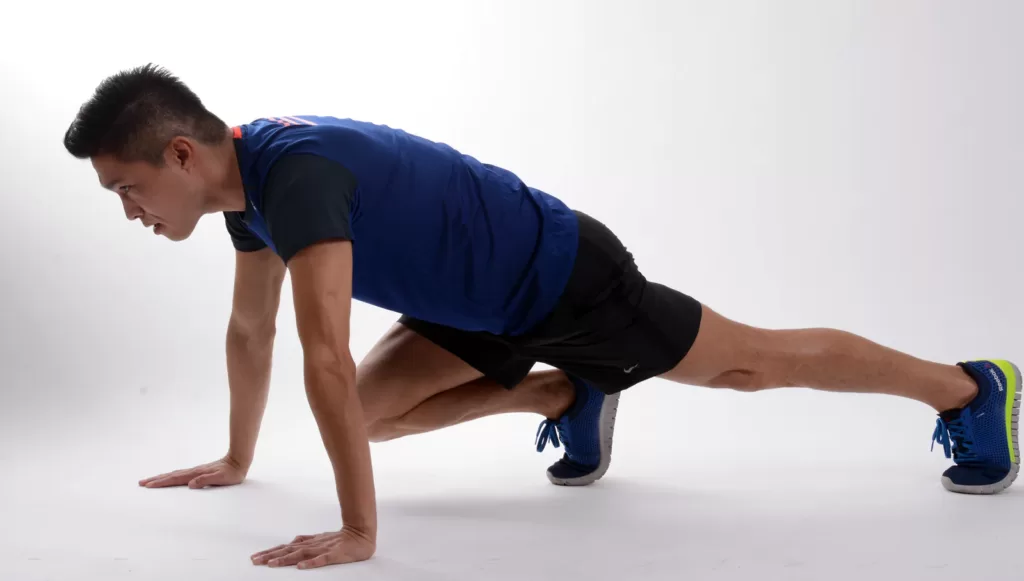Well done for deciding to take charge of your health and fitness through regular exercise. Many people, myself included, have secretly hoped that a lifestyle of junk food and couch potato-ing will somehow result in a toned physique. Nevertheless, that’s not going to occur. In spite of the common belief that working out is a waste of time, there are many advantages to making the effort to become physically fit.
Physical exercise is essential for maintaining good health and fitness across all ages. Regular exercise helps to strengthen the body and improve overall physical and mental well-being. It has been shown to reduce the risk of chronic diseases, such as diabetes, heart disease, and obesity, as well as improve cognitive function and mental health.
In this article, we will explore the various reasons why regular body exercise is necessary for maintaining fitness and good health across all ages. Here are some suggestions to get you started on the road to a healthier, happier body
Weight management
Regular exercise helps to maintain a healthy weight. Obesity is a major health concern, and exercise is a critical component of weight management. Exercise burns calories, and increaseshttps://eastsidewriters.com/how-to-get-a-zero-figure-and-the-negative-consequences-of-it/ muscle mass, it helps to boost metabolism. This, in turn, helps to maintain a healthy weight and reduce the risk of obesity-related diseases.

Improves Cardiovascular Health
Regular exercise helps to improve cardiovascular health. Exercise helps to strengthen the heart and improve blood flow, which reduces the risk of heart disease, stroke, and other cardiovascular diseases. Aerobic exercise, in particular, such as running, cycling, or swimming, is effective in improving cardiovascular health.
Uplifts muscle strength
Regular exercise helps to improve muscle strength and flexibility. As we age, our muscles naturally weaken, which can lead to mobility problems and falls. Exercise can help to improve muscle strength and flexibility, reducing the risk of falls and improving overall mobility. Resistance training, such as weight lifting, is particularly effective in improving muscle strength.
Helps in stress management
Regular exercise helps to reduce stress and improve mental health. Exercise releases endorphins, which are natural mood boosters. Regular exercise has been shown to reduce symptoms of anxiety and depression, as well as improve overall mental well-being.
Aids in maintaining cognitive function
Regular exercise helps to improve cognitive function. Exercise has been shown to improve memory and cognitive function, reducing the risk of cognitive decline and dementia. It also helps to improve focus and attention, which can benefit academic and work performance.
Improves bone density
Regular exercise helps to improve bone density. Exercise helps to strengthen bones, reducing the risk of osteoporosis and fractures. Weight-bearing exercises, such as walking or weight lifting, are particularly effective in improving bone density.
Boosts immune system
Regular exercise helps to boost the immune system. Exercise helps to stimulate the production of immune cells, improving the body’s ability to fight off infections and diseases. It has also been shown to reduce inflammation, which is a major contributor to many chronic diseases.
Enhances quality of life
Regular exercise can improve the overall quality of life. Exercise helps to improve energy levels, sleep quality, and overall well-being. It can also help to improve self-esteem and confidence, reducing the risk of depression and other mental health problems.
The best and easy workouts for you to stay healthy
Check out this list of the top six workouts you can do to achieve your fitness goals. Put them together into a regimen for a fitness regimen that is straightforward yet effective, and it will ensure that you remain in good fitness for the remainder of your existence.
You should see increases in your muscle endurance, and balance after 30 days of doing them, though you may also do them simply twice a week and have the same results. You’ll also notice a modification to the way your clothes fit, which is always a plus.
1. Lunges
Lunges are an excellent exercise for strengthening the lower body muscles, including the glutes, quadriceps, and hamstrings. They can also help to improve balance and stability, making them a valuable exercise for athletes, older adults, and anyone looking to stay active and maintain lower body strength.
Here are some of the benefits of lunges:
Strengthening the leg muscles: Lunges target the muscles in the legs, including the quadriceps, hamstrings, and glutes. These muscles are important for everyday activities like walking, running, and climbing stairs.
Improving balance and stability: Lunges require the use of the core muscles to maintain balance and stability. This can help to improve overall balance and stability, reducing the risk of falls and injuries.
Increasing flexibility: Lunges require a significant amount of flexibility in the hips and legs. Performing lunges regularly can help to increase flexibility in these areas.
Boosting calorie burn: Lunges are a compound exercise, meaning they work for multiple muscle groups at once. This can help to boost calorie burn and improve overall cardiovascular fitness.
Here’s how to perform a lunge:
- Start by standing with your feet shoulder-width apart.
- Take a large step forward with your right foot, keeping your left foot in place.
- Lower your body down until your right thigh is parallel to the ground and your right knee is directly over your ankle.
- Push through your right foot to return to the starting position.
- Repeat on the other side, stepping forward with your left foot.
- Complete 10-15 repetitions on each side, or as many as you feel comfortable with.
Tips for performing lunges safely:
- Keep your front knee directly over your ankle, not extending beyond it.
- Keep your back straight and your core engaged throughout the exercise.
- Start with small lunges and work your way up to larger ones as you become more comfortable with the movement.
- If you have knee or hip problems, speak with a doctor or physical therapist before performing lunges.
- Gradually increase the number of repetitions and sets as your strength improves.
lunges are an effective lower body exercise that can help to strengthen the leg muscles, improve balance and stability, increase flexibility, and boost calorie burn. By incorporating lunges into your workout routine, you can stay active and maintain lower body strength for overall health and well-being.
2. Pushups
Push-ups are a great exercise to help you stay active as they engage multiple muscle groups, including your chest, shoulders, triceps, and core.
Here are some of the benefits of doing push-ups:
- Strengthens muscles: Push-ups are a bodyweight exercise that can help you build upper body strength and muscular endurance. As you get stronger, you may find that you can do more push-ups with ease.
- Improves posture: Push-ups require you to engage your core muscles, which can help improve your posture over time.
- Enhances cardiovascular health: Push-ups are a compound exercise that engages multiple muscle groups and increases your heart rate, helping to improve your cardiovascular health.
- Can be done anywhere: You don’t need any equipment to do push-ups, so they can be done anywhere and at any time.
Here’s how to do a basic push-up:
- Begin in a plank position with your hands shoulder-width apart and your feet together.
- Lower your body until your chest touches the ground or comes close to it.
- Push yourself back up to the starting position.
- Repeat for the desired number of reps.
Remember to keep your body in a straight line throughout the movement, engage your core muscles, and breathe consistently throughout the exercise. If you are new to push-ups, you can modify the exercise by doing push-ups from your knees or against a wall. As you get stronger, you can progress to more advanced variations, such as diamond push-ups or one-arm push-ups.
3. Squats
Squats are a fantastic exercise to help you stay active as they work many of the major muscle groups in your lower body, including your glutes, quads, hamstrings, and calves.

Here are some of the benefits of doing squats:
- Builds strength: Squats are a compound exercise that target multiple muscle groups, which makes them an effective way to build lower body strength and muscular endurance.
- Improves mobility: Squats require a full range of motion in your hips, knees, and ankles, which can help improve your mobility and flexibility over time.
- Enhances balance and stability: Squats require you to engage your core muscles and maintain proper form, which can help improve your balance and stability.
- Can be done anywhere: Squats can be done with little or no equipment, so they can be done anywhere and at any time.
Here’s how to do a basic squat:
- Stand with your feet shoulder-width apart, toes pointing forward or slightly outwards.
- Lower your body as if you are sitting down on an imaginary chair, keeping your chest up and your weight on your heels.
- Stop when your thighs are parallel to the ground or lower if you can manage it.
- Push yourself back up to the starting position.
- Repeat for the desired number of reps.
Remember to keep your knees in line with your toes, engage your core muscles, and breathe consistently throughout the exercise. If you are new to squats, you can modify the exercise by doing squats while holding onto a chair or wall for balance. As you get stronger, you can progress to more advanced variations, such as jump squats or single-leg squats.
4. Burpees
Burpees are a full-body exercise that can help you stay active and improve your cardiovascular fitness. They engage many of the major muscle groups in your body, including your chest, shoulders, triceps, core, glutes, and legs.
Here are some of the benefits of doing burpees:
- Boosts cardiovascular health: Burpees are a high-intensity exercise that raises your heart rate, which can help improve your cardiovascular health and burn calories.
- Builds strength and endurance: Burpees require you to use your bodyweight, making them an effective way to build strength and muscular endurance in your upper body, core, and lower body.
- Improves coordination: Burpees require you to coordinate multiple movements, which can help improve your overall coordination and athletic ability.
- Can be done anywhere: Burpees can be done with little or no equipment, so they can be done anywhere and at any time.
Here’s how to do a basic burpee:
- Begin in a standing position with your feet shoulder-width apart.
- Lower your body into a squat position, placing your hands on the ground in front of you.
- Kick your feet back into a plank position.
- Lower your chest to the ground and perform a push-up.
- Push yourself back up to the plank position.
- Jump your feet back up to your hands.
- Explosively jump into the air, reaching your arms overhead.
- Land softly and repeat for the desired number of reps.
Remember to engage your core muscles throughout the movement, breathe consistently, and land softly when jumping. If you are new to burpees, you can modify the exercise by omitting the push-up or the jump at the end. As you get stronger, you can progress to more advanced variations, such as adding a jump squat at the end or doing burpees with a weighted vest.
5. Planks
Planks are a great exercise to help you stay active as they engage your core muscles and promote stability throughout your body.
Here are some of the benefits of doing planks:
- Builds core strength: Planks are a static exercise that engages your entire core, including your abs, obliques, lower back, and hips, making them an effective way to build core strength and stability.
- Improves posture: Planks require you to maintain a neutral spine position, which can help improve your posture and reduce the risk of back pain.
- Enhances balance and coordination: Planks require you to maintain balance and stability throughout your body, which can help improve your overall balance and coordination.
- Can be done anywhere: Planks require no equipment, so they can be done anywhere and at any time.
Here’s how to do a basic plank:
- Start on the floor in a push-up position, with your hands shoulder-width apart and your feet together.
- Lower your forearms to the ground, keeping your elbows directly below your shoulders.
- Straighten your body, with your toes tucked under and your legs extended behind you.
- Engage your core muscles, keeping your back flat and your hips level with your shoulders.
- Hold the position for as long as you can, making sure to breathe consistently throughout the exercise.
- Lower your body to the ground to release the plank.
Remember to keep your body in a straight line throughout the movement, engage your core muscles, and breathe consistently. If you are new to planks, you can modify the exercise by starting on your knees or by holding the plank for shorter periods of time. As you get stronger, you can progress to more advanced variations, such as side planks or plank jacks.
6. Glute bridge
Glute bridges are a great exercise to help you stay active as they target your glutes, hamstrings, and lower back muscles.
Here are some of the benefits of doing glute bridges:
- Builds glute and hamstring strength: Glute bridges target the glutes and hamstrings, making them an effective way to build lower body strength and muscular endurance.
- Improves hip mobility: Glute bridges require a hip extension, which can help improve hip mobility and flexibility over time.
- Promotes lower back health: Glute bridges help strengthen the lower back muscles, which can help reduce the risk of lower back pain.
- Can be done anywhere: Glute bridges require no equipment, so they can be done anywhere and at any time.
Here’s how to do a basic glute bridge:
- Lie on your back with your knees bent and your feet flat on the ground, hip-width apart.
- Engage your core muscles, and press your feet into the ground to lift your hips up towards the ceiling.
- Squeeze your glutes at the top of the movement, making sure to keep your knees in line with your toes.
- Lower your hips back down to the starting position.
- Repeat for the desired number of reps.
Remember to engage your core muscles throughout the movement, press your feet firmly into the ground, and breathe consistently. If you are new to glute bridges, you can modify the exercise by holding the bridge for shorter periods of time or by placing a small pillow or ball between your knees for added stability. As you get stronger, you can progress to more advanced variations, such as single-leg glute bridges or glute bridges with a resistance band.

Conclusion
In conclusion, regular exercise is essential for maintaining good health and fitness across all ages. It has numerous benefits, including maintaining a healthy weight, improving cardiovascular health, improving muscle strength and flexibility, reducing stress and improving mental health, improving cognitive function, improving bone density, boosting the immune system, and improving the overall quality of life. Whether it’s walking, running, weight lifting or another form of exercise, incorporating regular physical activity into daily life can help to improve overall health and well-being.
Disclaimer:
The author’s views are his or her own. The facts and opinions in the article have been taken from various articles and commentaries available in the online media and Eastside Writers does not take any responsibility or obligation for them.
Note: Contact our Writers at www.eastsidewriters.com for writing Blogs/Articles on any niche. We have experts in various domains, from Technology to Finance and from Spirituality to Lifestyle and Entertainment.







Pingback: Gout - The Silent Attacker - Causes, Prevention, and Remedies - Eastside Writers
Pingback: Shedding Pounds for a Healthier You: Inspiring Reasons And 12 Tips to Reduce Your Weight - Eastside Writers
Pingback: The Silent Thief of Oxygen: Exploring the Causes, Symptoms, and Treatments of Anemia - Eastside Writers
Pingback: Demystifying Diabetes: Know the Differences Between Type 1 and Type 2 Diabetes - Eastside Writers
Pingback: Exploring the Rarest Genetic Neuromuscular Disorder: The Mysteries of Rippling Muscle Disease - Eastside Writers